Just as I was about to leave the Museum this evening, I discovered that today is in fact Museum Cat Day! After getting over the disappointment I felt at having not been aware of this momentous celebration of all things feline and ‘museumy’(?!), I set about tracking down some cats which will be taking up residence in the new galleries. The first I have for you is a small cat edging its way up a tree in the Garden of Eden, appearing very interested in the plethora of birds in the branches above.
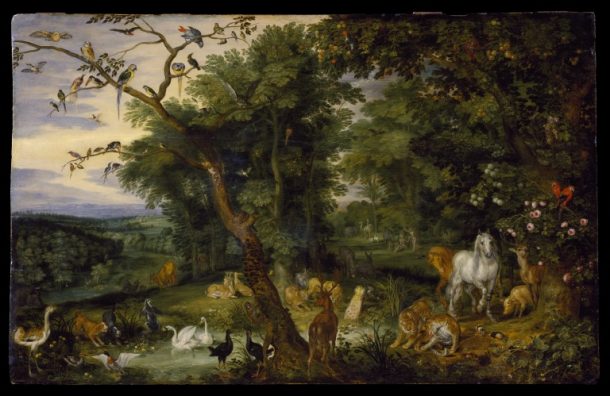

Its size and ‘tabby’ markings suggest that it could be a domestic ‘housecat’ (or Felis catus to use its correct Binomial name!). However the black stripes running along its back and its white underside are also indicators of certain species of wildcats (Felis silvestris) – which could perhaps be more fitting.
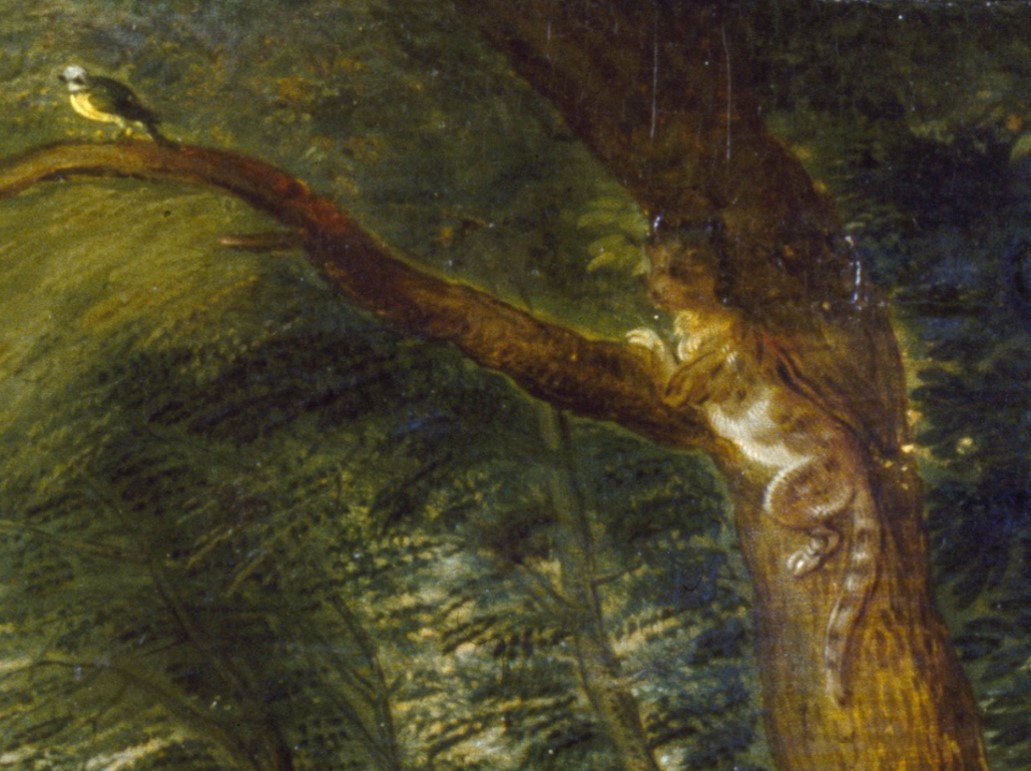
Perched lower down in the same tree is this cat with a slightly concentrated or wary expression.

I can’t decide whether it is busy eyeing-up the two scarlet macaws on the right of the painting, or cautiously keeping an eye on the grey horse making its way past.
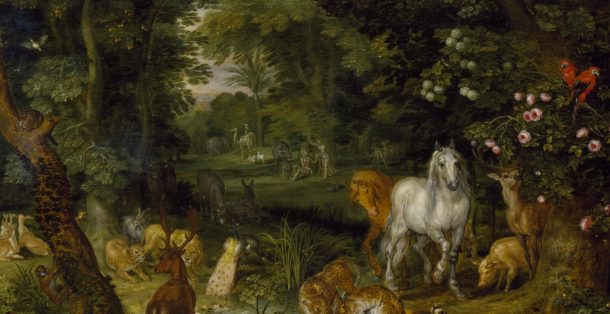
Interestingly neither of the cats appear interested in the lions and leopards below them.
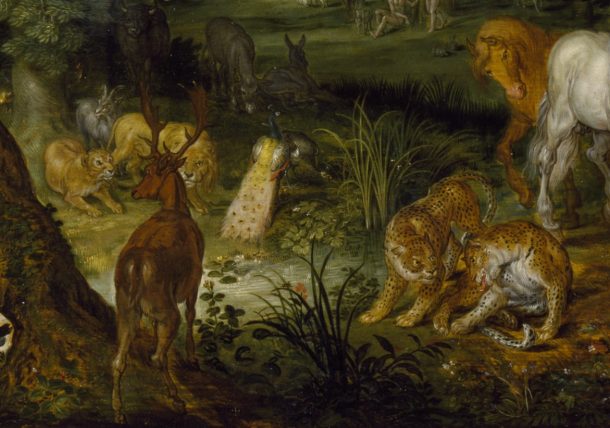
Jan Bruegel the Elder’s animal scenes were very popular and were frequently copied and imitated. This particular painting is a good example of his customary use of colourful landscapes with a profusion of animals and rich vegetation. The highly-detailed depiction of the animals demonstrates his close interest in nature. The vegetation and animals in this painting have sometimes been read emblematically. For instance, the lion has been interpreted as a symbol of Jesus Christ and resurrection – this echoes, by contrast, the scene of the Temptation and the forthcoming fall of Man taking place in the background.

Another cat who will help form the galleries’ cast of cats is the attentive feline in the top-left corner of Fran Snyders’ rather visceral ‘Still Life with a Dead Stag’.
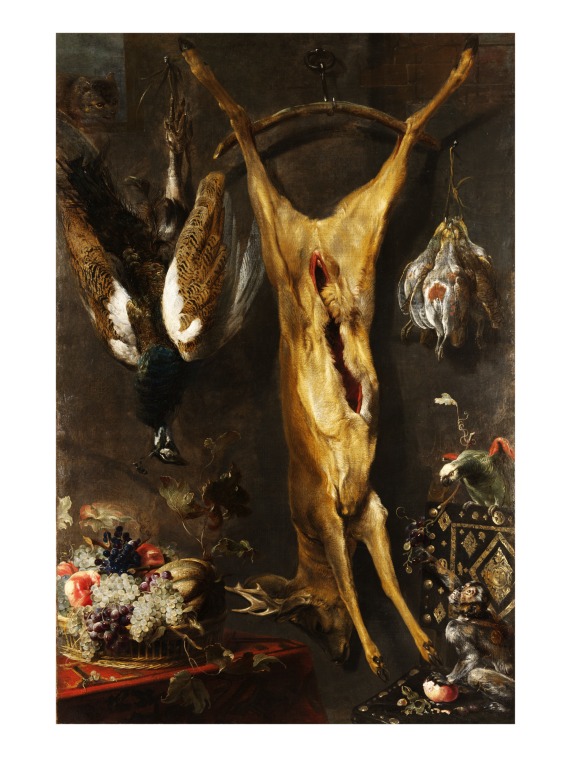
Snyder’s cat appears to be licking its lips in anticipation of sneaking into the room to have a thorough investigation of the stag, peacock and game-birds which are hanging up. Its attention is so taken with this potential feast that it pays no mind to the monkey sat on the chair or the squawking parrot above it.

The cat was only recently uncovered during conservation work to remove some old and very discoloured varnish from the painting. A number of other interesting details were revealed during the varnish removal, including the artist’s signature between the legs of the stag.


Frans Snyders specialised in large still-life paintings like this, which reached the height of its popularity in Western Europe, especially in the Netherlands, during the 17th century. He produced an impressively large body work during his lifetime and was also extensively copied. More than 300 paintings attributed to Snyders survive (though many are likely misattributed copies). A number of these paintings feature a cat similar to ours in the composition. One example can be seen on display at the Musée de la Chasse et de la Nature (Museum of Hunting and Nature), Paris, and another in a private collection can be viewed online here.
Now I feel that I have sufficiently marked such a prestigious event as ‘Cat Museum Day’, I’ll leave you with my favourite cat discovery of the day: ‘Clowder’ and ‘glaring’ are both recognised terms for groups of cats (approved by the Oxford English Dictionary). The term ‘clowder’ can be found used in Joseph Strutt’s ‘The sports and pastimes of the people of England …’, first published in 1801. Strutt also specifies that the term ‘kyndyll’ would be applied to a group of young cats. Other collective noun gems mentioned by Strutt include ‘a richness of martins’, ‘a down of hares’ and ‘a shrewdness of apes’.
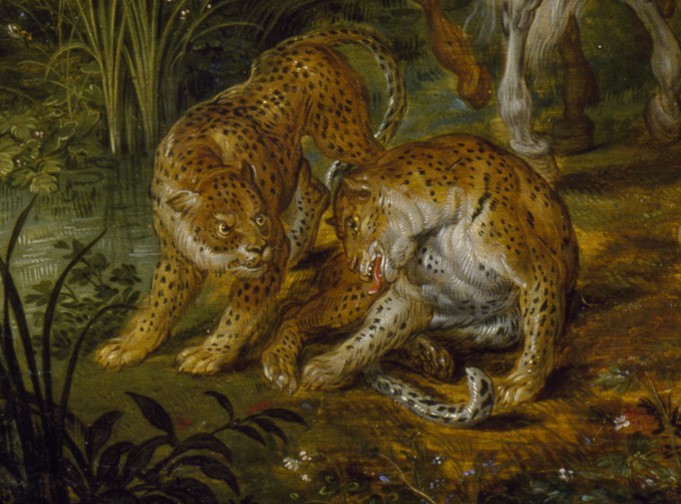

When was this momentous day? Will it be celebrated annually ? Thank you Dawn ˚•˚
Hi Jane,
The hashtag #MuseumCats used to instigate ‘Museum Cat Day’ was apparently initiated by the Twitter account @CultureThemes in collaboration with the cat-focused @CuratorialCats.
Given the vast number of kitty contributions from museums around the world marking the day, I feel confident that it will make a return on 30th July next year.
You can see a continuing collection of contributions here: https://twitter.com/CuratorialCats
Dawn